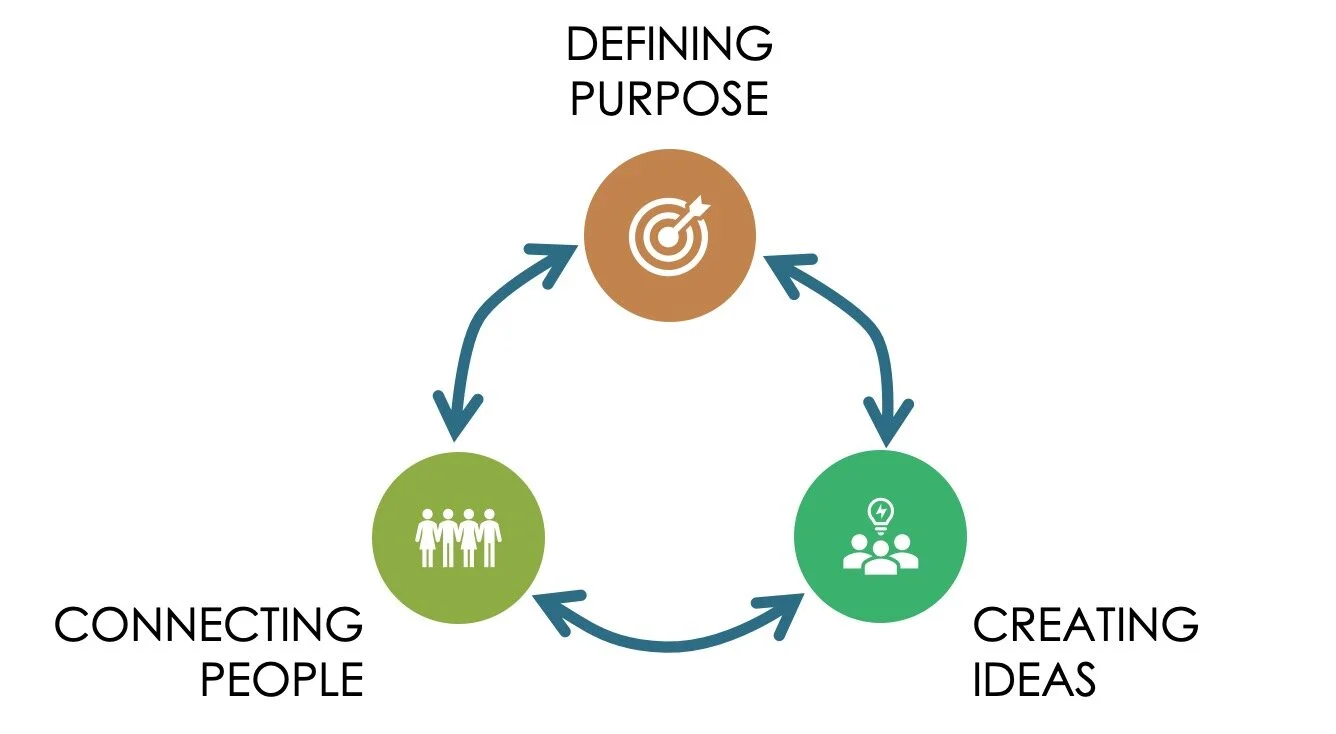Is Collaboration Just a Buzzword?
When I started researching and thinking about collaboration so that I could build great training materials and help people to be better at it, I spent some time looking around at what others thought collaboration was … how the term was being used … how it was showing up.
I found that oftentimes, collaboration is just a buzzword … a code word for saying: “I can fit in” or “I can relate to other people”. It’s even used to market technology that’s really meant to help people share information … leaving people with the impression that by using the technology, they’re collaborating.
It doesn’t help that the dictionary definition is so generic. The Oxford Dictionary describes collaboration as “the action of working with someone to produce or create something”. It’s not wrong, but I’d suggest it’s not really right either. According to this definition, if I sit at the kitchen table with my 4-year-old granddaughter with some crayons and we draw a picture, we will have collaborated. That’s not what comes to mind when I think of collaboration.
So, let’s make it clearer. Here’s how I would define it:
Collaboration is a creative process that builds connections between people by exploring and developing new innovative ideas to achieve a common purpose.
If you break it down a bit further, collaboration has three parts, which I call dynamics:
Defining Purpose – this is why you are collaborating.
Connecting People – bringing people together so they can interact effectively.
Creating Ideas – using imagination and creativity to build new thinking.
I like this framework of three collaboration dynamics, because:
If you take away one of the dynamics, you aren’t collaborating.
Without purpose, you have a group of people chatting about interesting ideas. Imagine sitting with your friends at the local pub. Lots of ideas generated in a group setting, but in most instances, the creativity is never translated into action, or anything else.
Without a group of people functioning together … well … this one is really just somebody thinking up cool ideas. Definitely not collaboration.
Without creativity, you have a group of people working to achieve some purpose. To me, this is teamwork. Teamwork makes use of the skills in the team to get something done. Only when they begin working as a group to develop new or novel ways of working does it become collaboration. Think of a yard cleaning crew or a team of surgeons. They typically aren’t inventing new ways of doing their work, they are simply applying their skills to a job.
Each dynamic is a process that is unique to the circumstances.
Collaboration isn’t a recipe where you mix ingredients and always get what you want. Each process is constantly adapting to accommodate how the people involved are interacting and reacting. While you might see similar tactics being used between collaborative efforts, those tactics are constantly being adjusted to meet the needs of the group. Even inside a long-standing, well-functioning group, collaborative processes adapt to the current emotional states and reactions of the group.
I think this kind framework with its three dynamics allows collaboration to move beyond just being a buzzword. You mix together a challenging problem, different personalities and emotional states, a sprinkle of our typical biases, a variety of life experiences, usually with a limited amount of time to work together … and you get a sense of why collaboration can be so challenging … and so rewarding.
Be sure to sign-up at Collaboration Dynamics to receive these regular postings, hear about upcoming training events, or see new and interesting information on collaboration. And, make sure you share with someone you think would be interested.

